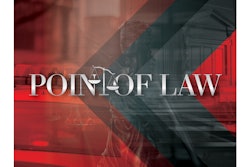 Vehicle pursuits can be extremely dangerous for law enforcement officers, suspects, uninvolved motorists, and even pedestrians. Pursuit policies should establish when a chase is worth the risk and specify that the risk must be re-evaluated as the pursuit continues. Photo: getty/Wafue
Vehicle pursuits can be extremely dangerous for law enforcement officers, suspects, uninvolved motorists, and even pedestrians. Pursuit policies should establish when a chase is worth the risk and specify that the risk must be re-evaluated as the pursuit continues. Photo: getty/Wafue
There are few activities police officers do while conducting enforcement activities that give as much of an adrenaline rush more than a good car chase. A vehicle pursuit is one of the few experiences where your training, experience, and ability all come together for the purpose of ensuring the apprehension of a suspect who committed a crime. Officers relish such moments, but they are fraught with risk, both physically and legally for all parties involved.
This is why agencies must have a comprehensive pursuit policy that limits the initiation of a pursuit and narrowly tailors an officer’s ability to continue the pursuit. Is it right for an agency’s leaders to draft a pursuit policy that provides strict limitations? Absolutely. The reasons for such a policy is based on the most important duty as a police leader—officer safety and public safety. Too often I hear officers and command staff say their leaders draft policies to reduce liability. While reducing liability is an important consideration, the primary concern should be the safety of our staff and the citizens we serve.
Over my career as a litigator I have had the unfortunate experience of being involved in cases against my clients where an innocent person was severely injured as a result of a police pursuit. Did that mean the pursuit was wrong? No. Did that mean the officers were not justified in pursuing the individual? No. It just means pursuits are very high risk to officers and citizens alike.
While I can’t share all of my experiences with pursuits I will share one where officers followed procedure and the suspect struck a 21-year-old college student doing about 100 mph. As a result of her injuries she became a quadriplegic. She was an NCAA star athlete, and she was just in the wrong place at the wrong time. I remember on the day of settlement for the litigation case, as I listened to the number “$12 million dollars,” trying to wrap my head around explaining that to my clients. The Judge made it easy for me when he pulled me aside and said, “Do you see the victim? Someone is paying for that.”
That’s why I write this article today. Not to stop police pursuits, but to make sure all officers fully understand the risk associated with them. That risk is why the main objectives for police leaders when drafting a good pursuit policy should be to manage risk and conduct a “cost-benefit” analysis that weighs the importance of apprehension against the possibility of serious physical injury or death to our officers or the innocent motorist or pedestrian. So, with these objectives in mind, let’s look at important factors to consider in your agency’s pursuit policy.
 Vehicle pursuits can be extremely dangerous for law enforcement officers, suspects, uninvolved motorists, and even pedestrians. Pursuit policies should establish when a chase is worth the risk and specify that the risk must be re-evaluated as the pursuit continues. Photo: getty/Wafue
Vehicle pursuits can be extremely dangerous for law enforcement officers, suspects, uninvolved motorists, and even pedestrians. Pursuit policies should establish when a chase is worth the risk and specify that the risk must be re-evaluated as the pursuit continues. Photo: getty/Wafue
Initial Concerns
Your agency should regulate and limit police pursuits, not to lower enforcement efforts or curb an officer’s ability to “do the job.” Agencies limit the discretion to engage in vehicle pursuits because they are one of the most dangerous activities an officer can undertake, and we want to make every effort to ensure the safety of our personnel and citizens. To that end, it is important in the policy statement to announce that no officer or supervisor should be criticized or disciplined for a decision not to engage in a vehicle pursuit, based on the risk involved, even in circumstances where the directive would permit the commencement or the continuation of the pursuit.
We should not assume that all persons fleeing from the police have committed a felony. In fact, data shows that many vehicle pursuits are initiated based on a traffic offense or minor misdemeanor. A recently released Department of Justice study reviewed a number of factors involved in police pursuits. The DOJ found that over 69% of pursuits were initiated based on a motor vehicle offense, while less than 10% of the pursuits were initiated because the fleeing operator was suspected of committing a violent felony.
At my firm, Daigle Law Group, we believe the danger involved in conducting the pursuit far outweighs the need to apprehend the operator in cases involving traffic offenses or minor crimes. According to the DOJ study, there were more than 6,000 fatal crashes as a result of police pursuits in the 20-year period ending in 2015. Tragically, over a third of these fatalities involved innocent motorists or pedestrians, and over 60 officers were killed. Furthermore, in the heat of the chase the psychological phenomenon of “tunnel vision” can cloud officers’ judgment and prod them to continue the chase beyond the point where common sense and good judgment would call for the chase to be terminated. Frankly, in a common-sense risk analysis, the death or serious injury to an officer or innocent citizen does not equate with the need to apprehend a motorist suspected of committing a property crime or traffic offense.
For these reasons, your agency policy should specifically outline the allowable criteria for initiating a pursuit. We believe the criteria should be based on:
• A reasonable suspicion that the driver or occupant has committed or is attempting to commit a crime of violence,
• Whether officers can articulate the exigent need to apprehend the suspect because of the potential for harm to the public (public risk); and
• The pursuing officer’s conclusion that the imminent threat of death or grave bodily harm to the officer and the public created by the pursuit is less than the immediate or potential danger to the public should the suspect remain at large.
Absent extreme circumstances, there are a number of other circumstances where vehicle pursuits should be prohibited. These situations include:
• When there are non-police personnel or civilians in the vehicle;
• Pursuits of motorcycles or off road vehicles;
• During severe weather conditions; and
• When the police vehicle does not have working emergency lights and sirens.
Safety Factors
I’ve heard officers tell me more than once that they can’t wear a seat belt because they may have to jump out of the cruiser to pursue the offender. The simple facts are that: Seat belts save officers’ lives every day; no pursuit should be initiated without first buckling up; and your agency’s policy should require the use of seat belts.
From 1980 to 2008, 139 officers were killed after being ejected from their cruisers during a crash. Many of the hundreds more who died in crashes during this period were not wearing seat belts, over 42%. While these statistics are not limited to pursuit crashes, the data shows the importance of wearing your seat belt.
Your policy should include those factors that should be considered in addition to the crime the suspect is believed to have committed. It is also important to continually re-evaluate these factors during the pursuit and the reasonableness of continuing the pursuit. Evaluation factors include, but are not limited to:
• Weather conditions, traffic density, time of day, and the type of area;
• The speed involved, condition of the police vehicle and condition of the suspect vehicle;
• Alternate means of apprehension and whether officers have learned the identity and possible destination of the suspect
Pursuing officers and the monitoring supervisor must constantly re-evaluate these evaluation factors and not hesitate to call off the pursuit when changing circumstances require that the pursuit be ended.
Your directive should also include procedures for how the pursuit will be conducted to include:
• The number of vehicles allowed;
• Overtaking or passing police vehicles or the suspect vehicle; and
• The types of police vehicles allowed to engage in pursuits.
Forcible Stops
Your directive needs to address various stop techniques and clearly describe the pursuit-ending procedures that are allowed and those that are prohibited. Your directive should also address those procedures that can be initiated at the officer’s discretion and those that require pre-approval by a supervisor.
If your agency uses spike strips or other tire deflation devices, the deployment of these devices must be approved by the supervisor and only deployed by officers who have received training in the use of this equipment.
There must also be a connection between those procedures you allow and your training program. For example, if your policy allows the use of a PIT (Pursuit Intervention Technique) maneuver, then it is imperative that officers receive training in this procedure and regularly scheduled, follow-up training. These types of forcible stops are not recommended and you should discuss them with your legal counsel.
Crossing Jurisdictions
Your directive should provide specific guidelines for continuing a pursuit outside of your jurisdiction, and assisting in a pursuit that enters your jurisdiction by another agency. For example, how does your policy address an officer’s ability to assist another agency when the pursuit is based on factors that would not allow your officers to initiate a pursuit?
Simply put, your agency policy should provide clear guidelines to officers that restrict their ability to assist with the pursuit, and the outside agency should be advised accordingly. This would not be as big an issue if we were more consistent in our policy language across police agencies.
Accountability in these situations is important, and the supervisor is responsible for ensuring that the circumstances surrounding the out-of-town pursuit meet the guidelines outlined in your agency’s directive.
Accountability and Reporting
Your policy should clearly articulate the roles and responsibilities of the agency personnel involved in this activity. This includes the primary officer, assisting officers, the supervisor and, last but certainly not least, the communications personnel. Each person has a vital and essential to play in ensuring a safe and successful conclusion to the pursuit.
As with any high-liability activity, thorough documentation is extremely important. Each officer involved in a pursuit should complete a report and any additional forms required by the agency. This includes cases where the pursuit was called off. Why, you may ask, is it important to document those pursuits that are called off? It is important for the agency to show a history of properly conducting and re-evaluating pursuits and proactively ending the pursuits when safety factors warrant the pursuit being called off.
The supervisor is responsible for gathering the individual reports and drafting a full report and investigation of the pursuit. This includes gathering all of the appropriate data, including dispatch recordings, photographs, and any video footage of the pursuit.
Your directive should also clearly establish an inspection process to review pursuits. Someone in the agency must be tasked with reviewing the final report package to make sure that the incident is properly documented and meets agency requirements. In addition, a command-level employee should be tasked with conducting an annual review of all pursuits. This annual review will provide important data to assess whether changes need to be made to the agency’s policy or training programs.
Certainly, we have not covered all aspects of your agency’s pursuit directive in this article, but we have addressed the critical areas.
The responsibility for a successful and safe ending to any police pursuit squarely falls on three main players: the officers involved in the pursuit, the communications personnel assigned to manage the incident, and the supervisor assigned to monitor the pursuit.
Each member of your agency must know their role, the inherent dangers that come with this activity, and the limitations and guidance your agency has provided for the safety of the officers and the safety of the citizens they serve. This can be accomplished by drafting and issuing a clear and comprehensive policy and training your agency personnel in accordance with the policy.
“Point of Law” articles are produced to provide general information on the topics presented. They are distributed with the understanding that they should not be used as a substitute for professional services. If legal or other professional advice is required, the services of a professional should be sought.
Eric Daigle is founder of Daigle Law Group, LLC, a firm that specializes in law enforcement operations. A former Connecticut State Police officer, Daigle focuses on civil rights actions, including police misconduct litigation. He is a legal advisor for police agencies across the country and member of the POLICE Advisory Board.







